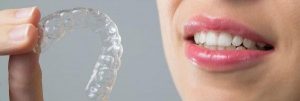Sometimes we wonder if patients think, “Is There Anything Invisalign Can’t Do”?
One reason for this is because Invisalign braces are a great dental tool. They have helped change the experience of having braces and straightening teeth so that it is a lot less uncomfortable for many people looking for that perfect smile.
Perhaps because of this, many people seem to think that Invisalign braces can be used to fix almost any orthodontic dental issue. But to be fair, this is not really the case.
Below we have listed some circumstances where Invisalign braces may not be able to solve dental issues, no matter how well they are applied.

1. Odd Tooth Shape. Some people’s teeth are too small, very round or severely pointy and this can cause them to not fit in the aligners correctly. If this is the case, regular braces may be a better option.
2. Position Of Teeth. If a patient’s teeth are too twisted, or they are tilted by more than say 45 degrees, Invisalign braces may not be able to correct the severity of the tilt.
3. Extra Large Gaps. Generally, Invisalign is unable to fill a gap larger than about 6mm. Other dental solutions such as dental implants, or other cosmetic dental solutions may be required to fill gaps that are too large for Invisalign.
4. Intrusions and Extrusions. Invisalign is more effective when moving the front teeth rather than the molars. Getting all teeth to be situated at the same height is not a strong point of Invisalign either.
5. Midline Movement. The midline is the line between your two front teeth. This can generally only be shifted either way by about 2mm by Invisalign braces.
6. Previous Dental Work. When patients have had previous dental work applied, such as bridges or crowns, they may render Invisalign as not a viable option.
7. Extracted Teeth. If teeth must be removed during treatment, then Invisalign may not be as effective, due to the similar reasons listed above.
https://orgonomictherapy.com/xanax-us/
We love Invisalign braces just as much as our patients, but we just want to be realistic about what they can and can’t achieve. They are not always a “go-to” solution to straighten teeth.
As with all the content on our website, this is general information and may not apply to specific patient circumstances. It is best to speak to a dentist about the options you may have to straighten your smile or your child’s smile.
We offer free consultations to assess the viability of Invisalign braces and other orthodontic or restorative dental techniques.
